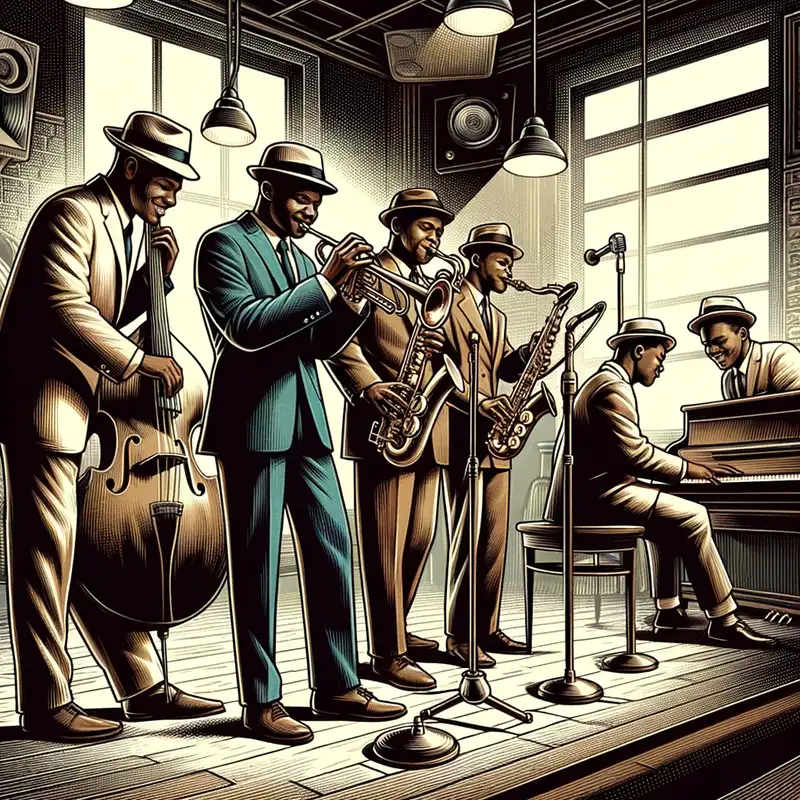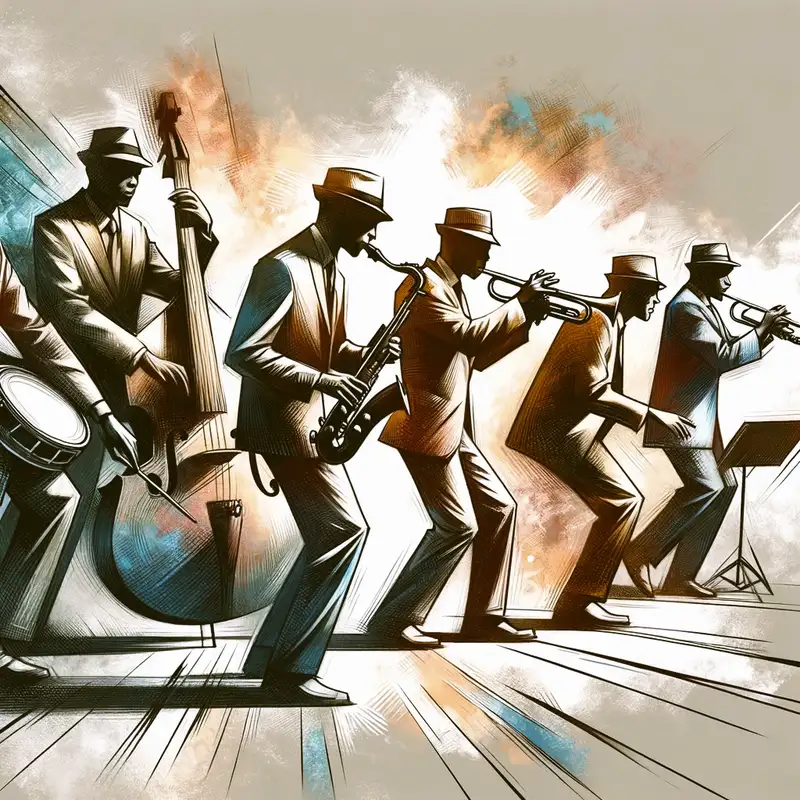Hard Bop

Hard Bop is high-energy, super soulful subgenre of jazz that emerged in the 1950s and hasn’t looked back since.
Table of Contents
The Roots of Hard Bop
Born in the mid-1950s, Hard Bop was like Bebop’s younger sibling who’d been listening to R&B and gospel on the sly. It retained the complex improvisations and intricate solos of Bebop, but threw in a hefty dose of soul and groove, making it more accessible and, dare we say, more fun.
The Titans of Hard Bop
- Art Blakey: This drummer and bandleader was a force of nature. His group, the Jazz Messengers, was basically a Hard Bop academy.
- Horace Silver: A pianist and composer who could make a piano groove like no one else.
- Cannonball Adderley: An alto saxophonist whose tunes could make you both think and dance.
- Clifford Brown: A trumpet virtuoso whose life was short but whose impact was colossal.
Instruments of Choice
While Hard Bop had the familiar lineup of saxophones, trumpets, piano, bass, and drums, the way these instruments were played was anything but ordinary. You could expect:
- Saxophones blasting out earthy, guttural tones.
- Trumpets breaking out into emotive, rip-roaring solos.
- Piano laying down grooves that could make a grandparent breakdance.
- Drums setting the kind of rhythm that could wake up a sleepy town.
The Hard Bop Sound: What Makes It Unique?
Let’s break down the signature elements of Hard Bop:
- Soulful Melodies
- Strong Rhythms
- Complex Harmonies
- Improvisation
Hard Bop Today
The Hard Bop style is so deeply ingrained in jazz that it continues to influence new generations of musicians. You’ll still hear its robust, soulful echoes in today’s jazz clubs and even some of today’s hip-hop beats.
Why Listen to Hard Bop?
If you like your jazz with a side of soul, a sprinkle of gospel, and a dash of intellectual rigor, Hard Bop is your jam. It’s not just about passive listening; it’s about feeling each note. It’s music that engages both your brain and your soul.
FAQ
What Is Hard Bop?
Hard Bop is a subgenre of jazz that emerged in the 1950s as a richer, more rhythmic and soulful extension of Bebop. It incorporates influences from R&B, gospel, and blues, resulting in a sound that’s complex yet groovy.
How Is Hard Bop Different from Bebop?
While Bebop focuses on intricate solos and complex improvisations, Hard Bop takes that complexity and adds a layer of soul, rhythm, and accessibility. It’s Bebop with a strong backbeat and emotional depth.
Is Hard Bop Socially Relevant?
Yes! Hard Bop emerged during a time of social and racial upheaval in America, and many view it as a form of musical expression that speaks to those struggles.
Any Recommendations for a Hard Bop Starter Pack?
You can’t go wrong with Art Blakey’s “Moanin'”, Horace Silver’s “Song for My Father,” or anything by Clifford Brown. These are great jumping-off points to get your Hard Bop journey started.

